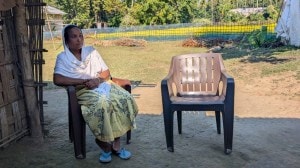Sleeping right through the Alarm
Caribbean spectators brought up on the legends which filled the great teams captained by Clive Lloyd and Vivian Richards firmly believe that...

Caribbean spectators brought up on the legends which filled the great teams captained by Clive Lloyd and Vivian Richards firmly believe that Brian Lara is the new apostle and about to preside over the birth of another great West Indian dynasty.
Just how Lara is going to manage this with the current squad is yet to be explained. It is such an undisciplined lot in the field that it is an embarrassment; even Bangladesh give the impression of being a far more professional bunch.
But this new dynasty image is the sort of cockeyed marketing ploy which delves deeply into the fanciful and in creating myths. It is not only the fanatical Windies supporter who is deluded but even, in some cases, the administrator and sets a dangerous precedent.
In 1998, Sir Conrad Hunte suggested before heading back to his beloved Barbados that it would take a generation of steady growth before the West Indies found a group of players as skilled and as magnetic as those of the 1970s and 1980s. Part of the problem with teams which distinguish eras of fecund ability to those now inhabited by the pauper, has been to identify why and where it has failed to maintain standards.
Despite warnings in the late 1980s from, among others, Hunte, Sir Garry Sobers and former Test batsman Cammie Smith, West Indies administrators chose to ignore the need for serious development structures until it was too late. Instead of building for the future they believed that the team8217;s invincibility would last forever. They also believed that the new generation was as good as the last one.
And, more damning, was their belief that world standards could never match the levels of skills to be found in the West Indies. The development structures though were just too haphazard and coaching methods were equally disorganised to make an impression.
In this sense, trying to pick up the pieces has not shown the dramatic results expected. Part of the problem is that much of the talent is lured to the United States, Canada and England in search of better jobs and living conditions.
Hunte knew this and feared for the future of the West Indies. They were slipping from a world power into a third-rate side as mediocrity and leadership divisions influenced selection policy and little was being done to address the problem.
Former England captain Sir Leonard Hutton voiced concerns of a similar nature 42 years ago, in the early 1960s. As he saw it, England would, in time, become a second-rate power unless the development and coaching structures showed dramatic improvement. He felt the dominant 8216;8216;amateur8217;8217; forces had been allowed to control the game for far too long.
When interviewed on the same subject in 1966, on the eve of the South Africa/Australia Test series, Sir Leonard 8212; eerily prescient 8212; felt that apart from the odd couple of years when world standards had dropped, England8217;s only success would be against teams in what he called 8216;8216;recovery8217;8217;.
Australia have often slipped into similar patterns of disintegration as an ageing side was beaten by younger, exuberant opposition. Only they have managed to bounce back. Apart from the 1950s and for a period in the 1960s and 1970s, Australia have been able to call on strong sides. But none have been as forceful or have had the depth of the dynasty which first emerged under Allan Border in 1989 and has continued since.
|
|
|
The West Indies ignored need for serious development, believing their invincibility would be permanent. Australia know there will be a dip in their standards over time and have set in place appropriate structures
|
|
|
Sure, part of it is to do with the Shane Warne factor and with Warne has come Glenn McGrath as well as other bowlers and batting strengths which have varied, with Mark Taylor, the Waughs and in recent years, the Hayden/Langer policy of laying waste to all opposition when touring Down Under.
Where the Australians have had the edge over other countries for so long has been a policy of coaching excellence. Yet even here there are times when a crop of youngsters are brought through the system and who are not as skilled or as magnetic as those they are replacing. At least Australia have not attempted to downplay the ageing aspect of the team and that the era of greatness is drawing to an end.
They do not believe, as did the West Indians in the 1980s, that invincibility is permanent. What they recognise is that there is going to be a dip in standards as other teams have caught up and passed those they had set. What they do have in place are structures to identify new talent and exploit its potential.
In a sense, South Africa have also learnt from this as they redeveloped their side. As Barry Richards pointed out the other day, world standards since the mid-1990s have been lifted as other sides have attempted to improve their strategies, gameplans and with the talent available attempted to beat the Australians. They are getting better at it as well and it is starting to show as the Aussies, with the end of the Steve Waugh era, are a team in decline.
For how long is anyone8217;s guess.
- 01
- 02
- 03
- 04
- 05






























